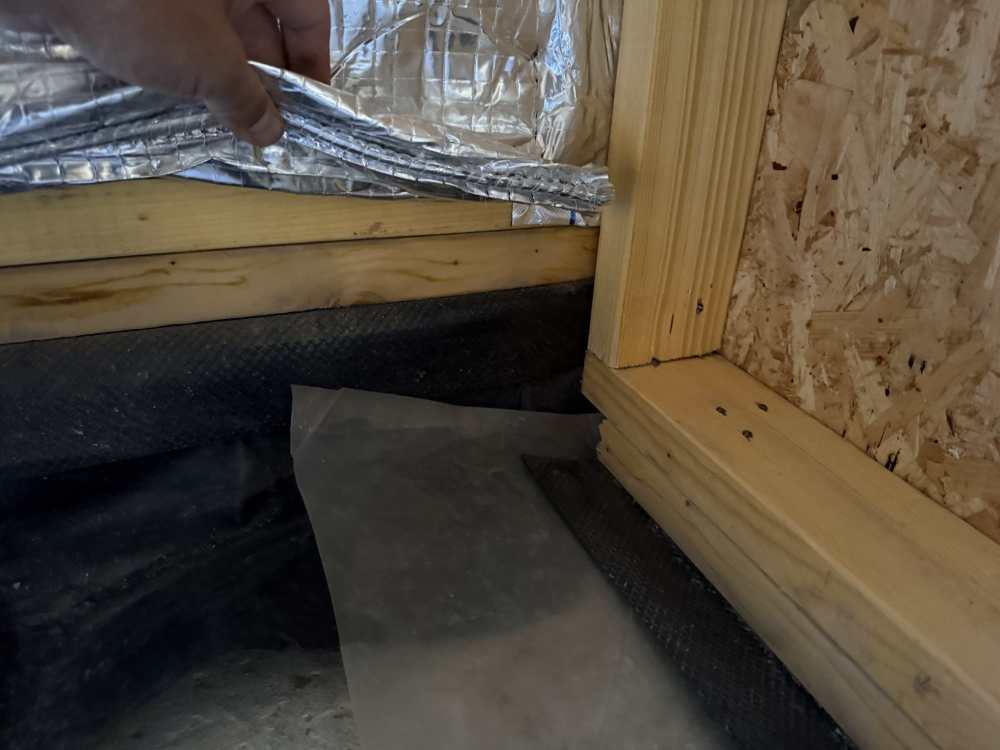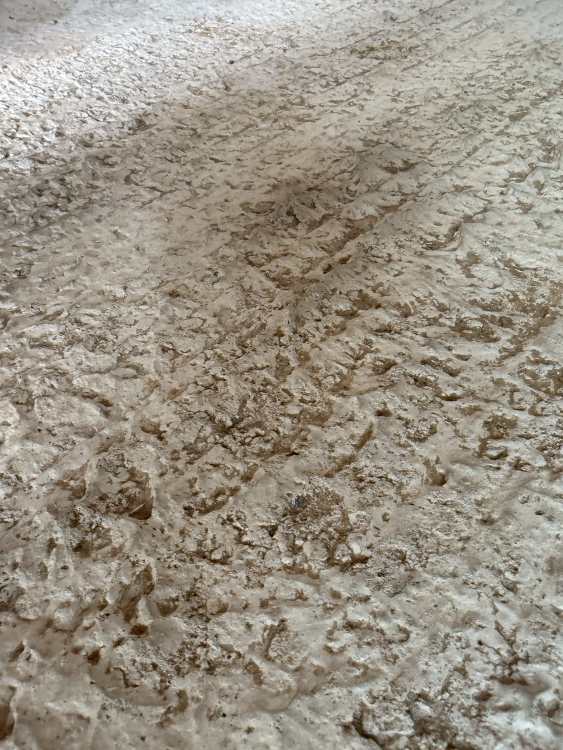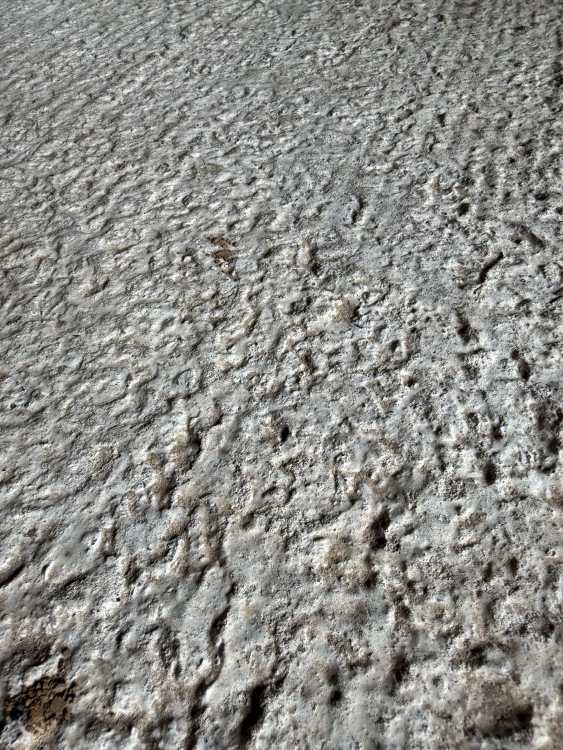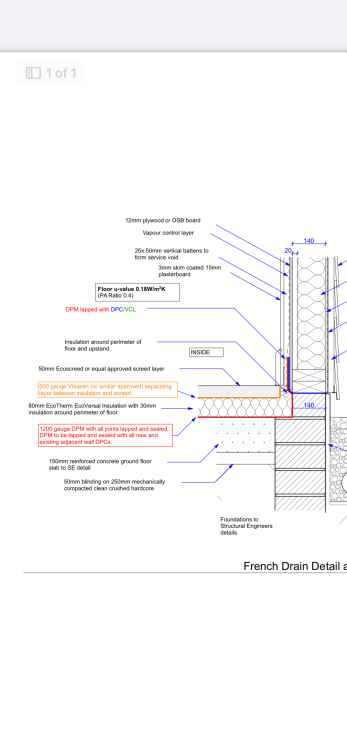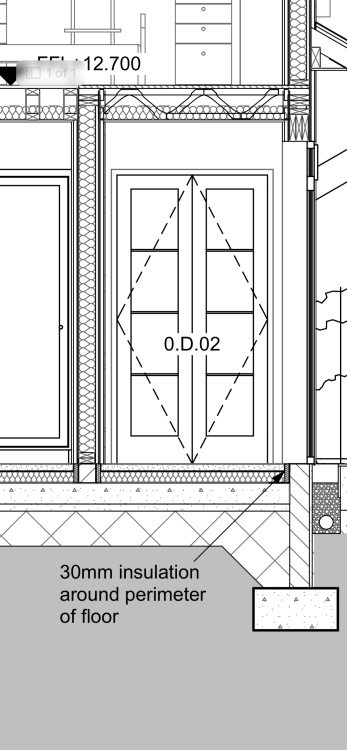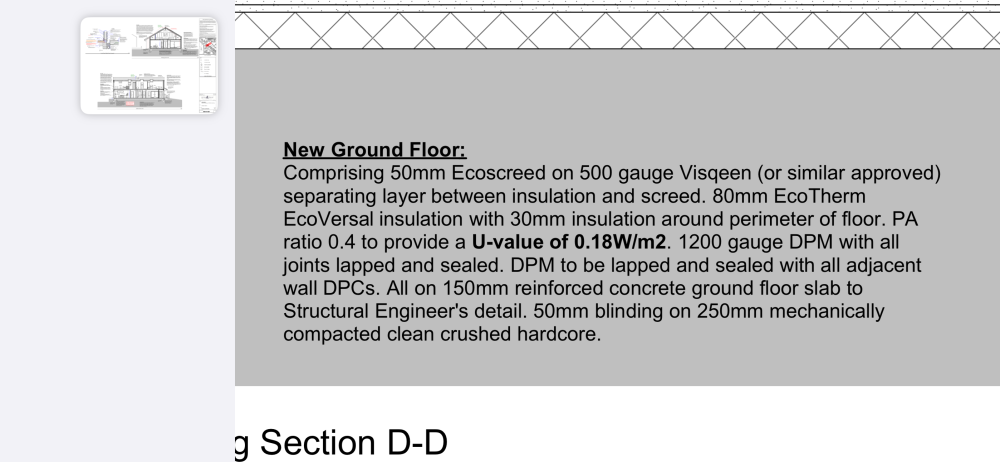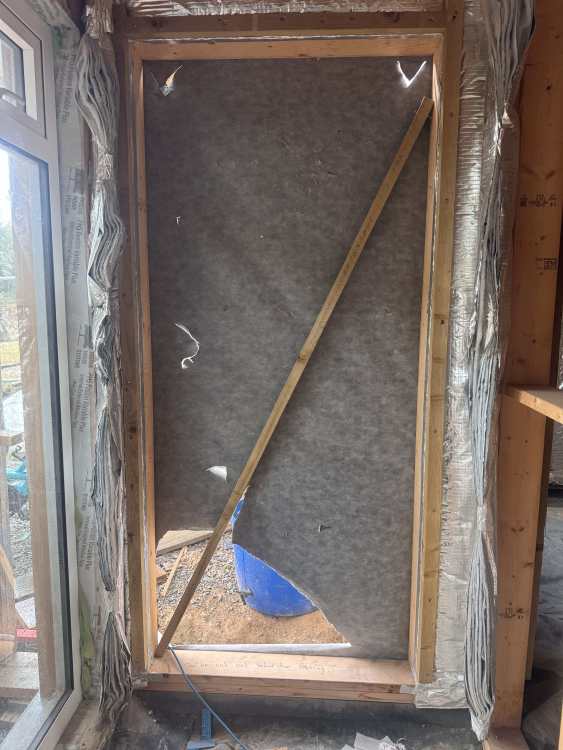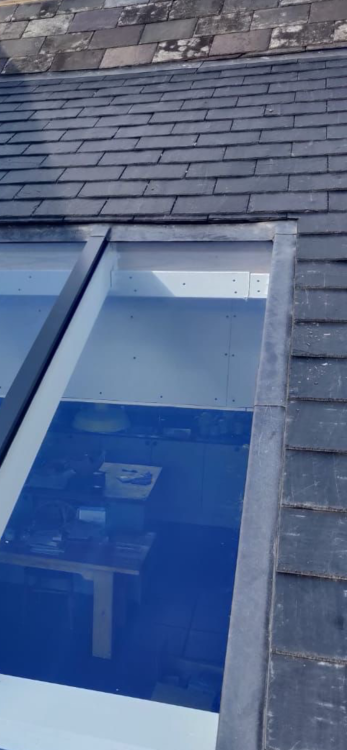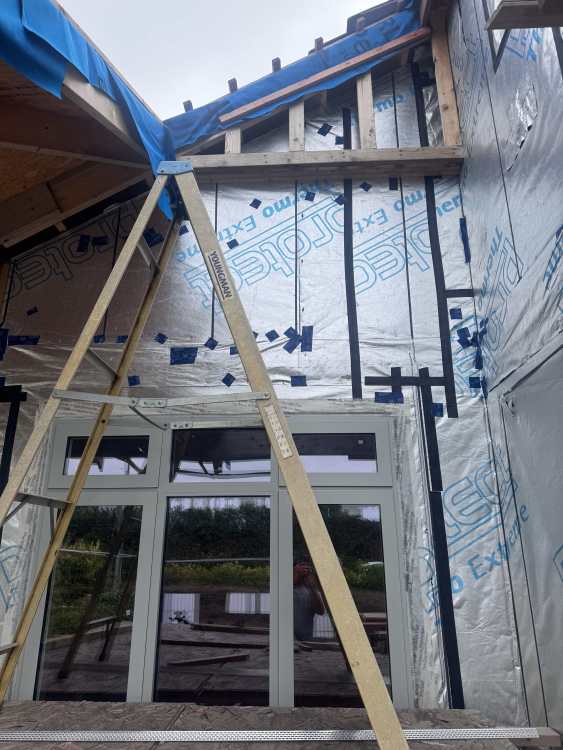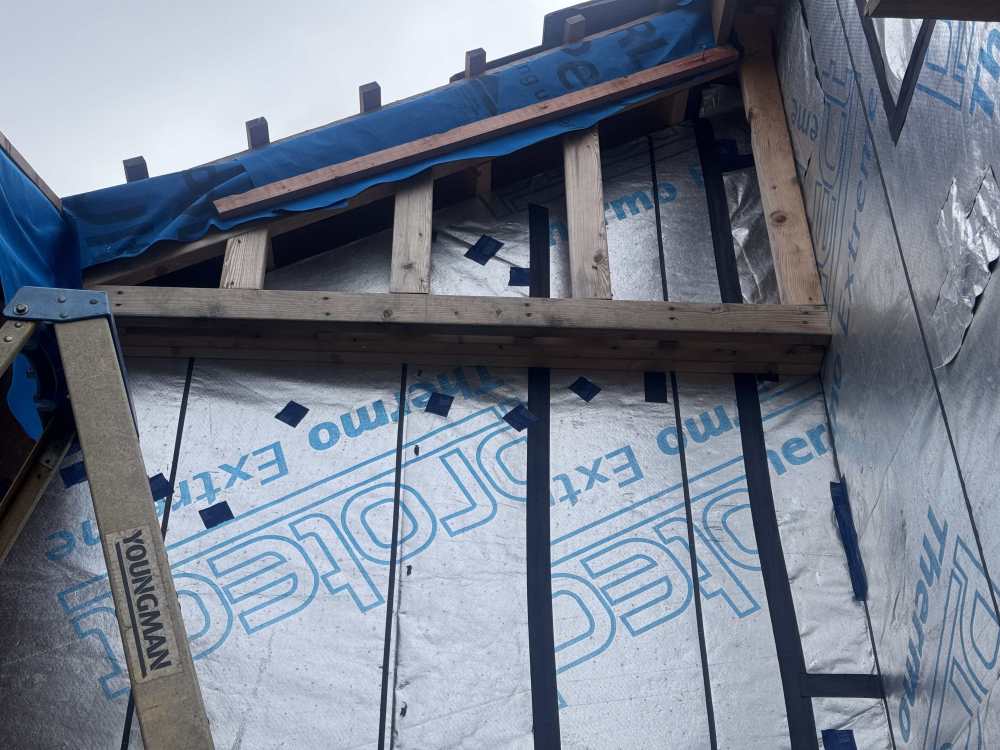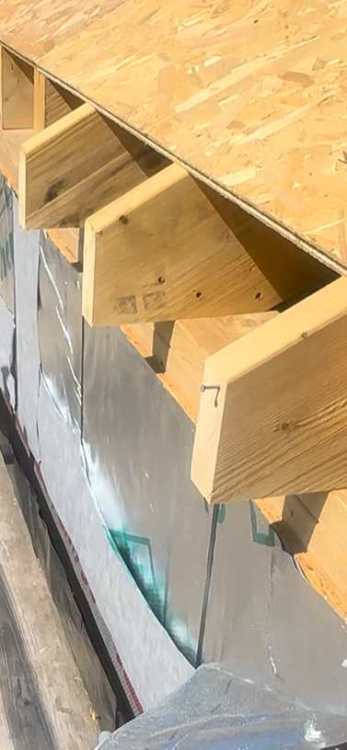
junglejim
Members-
Posts
220 -
Joined
-
Last visited
Everything posted by junglejim
-
Thank you for the thorough reply. The black dpm where your arrow is folds down and underlaps the dpm beneath stud partition by about 150mm. There isn’t any tape though but not sure if that’s essential? You’re correct to notice that the black dpm underneath the studs doesn’t extend 100mm … more like 50mm but the clear strip which also goes under the partition extends about 200mm. I’m hoping that’s ok and I can then tape the membrane that I’m laying over the concrete floor onto this. Thank you again, really appreciate any further advice you have here.
-
Top of screed will be just above no.2
-
Thanks for your reply Mike. Sorry I’m not explaining clearly. My issue (I think) is that I can’t access the small sections where the partition wall butts against the perimeter upstand/soleplate. The issue is 2 fold; 1. I can’t bend the dpm that is under the soleplate upwards as it’s folded down between the partition. This may not be an issue but 2. I can’t get in between the partition junction to seal the laps. there is no exposed concrete as the dpm strips overlap but they aren’t taped or sealed between partition and upstand. in my mind it would have been better to lay the dpm across the whole slab before the partition walls but this was done by the TF installer as standard.
-
-
I’m building up my ceiling layers. I have insulation between rafters, then internal osb, then super quilt heels in place with vertical battens screwed through to rafters. I’m then counter battening (horizontally) to create a 50mm void for downlighting and wiring etc. because it’s a vaulted ceiling I’ll need to lay plasterboard ‘landscape’ so the length will follow the same direction as the horizontal battens. I’m wondering if this is ok? I’ve read that plasterboard is designed to be installed with battens perpendicular to the length. I figure if the spacing is smaller it’ll be ok but looking for advice. Thanks
-
I’m thinking now that my battens should run the other way ie; first layer of battens horizontal and then counter battens vertical so that plasterboard is better supported?
-
Thanks. I’ve taped osb for the airtightness and have 175mm insulation behind. Advice and spec from TF supplier was to add ybs super quilt on top as vcl. I’m going to batten and counter batten to provide enough of a service void for downlighting.
-
The inside of my timber frame has YBS foil held in place with battens. I’m doing this into the vaulted ceiling which has osb on the inside face. I’ve marked where rafters are top and bottom so can run a laser to project the line and ensure battens go the same direction and through into rafters but I’m struggling with positioning and holding the foil in place until I batten. I’ve initially stapled to hold in place and then batten It would seem easier to run the ybs in vertical strips as makes tapping the joints easier but would welcome any advice on installation as definitely feels like I’m not being particularly efficient at the moment. Thanks
-
Here’s some photos of the slab…any thoughts? I’m thinking of laying a geotextile to protect dpm. What do you think?
-
Slowly progressing with my timber frame build and getting ready to lay dpm, add pir, ufh and screed. I’ve got a couple of questions: 1. My architect drawing shows flow dpm sealed to dpm under sole plate and lapped up external walls. (Red and blue lines in drawing) The internal walls were all installed at the same time as the external walls. So where these intersect I can’t fold up the dpm. The easiest solution would seem to be not to fold up the dpm strips that are under the sole plate and instead fold them down but tape / seal the new floor dpm to all junctions with overlap so that can fold up. It would mean that the there is only one layer of dom above the upstand rather than the 2 in the architect spec. In the corners presumably I’d use ‘hospital bed style’ to neatly tuck in without any break in the dpm. 2. there are sections of the slab that to my untrained eye seem quite uneven. I can chisel off small lumps but wondering if I should be taking additional measures to perfect the dpm? I haven’t got any photos yet and i could well be overthinking it! I don’t think self levelling screed will work because it would interfere with the dom under internal walls. I guess I’m wondering when I should worry about this and what solutions there are? I’m thinking the addition of a rubber layer (say 1-2mm) might be useful? 3. also with insulating the slab. The architect drawing shows the perimeter strip sitting on top of the sheet insulation. I’ve also seen lots of people do the strip first at full height then add the sheets. Wondering what the logic is for each method? Thanks as always does the help given.
-
Just wondering if anyone can offer any advice on this? Thank you
-
@Redbeardsee above
-
Thank you @Redbeard We’re currently at slab level with timber frame erected and wind/watertight. Onto of the slab we will insulate with rigid insulation which I understand should also have a perimeter Insulation/expansion joint. ontop of the insulation will be ufh, screed and then tiles to finish. Attached pictures are from BC drawings but scope to adapt if needed. Any advice welcome.
-
I’m building a timber frame house and am working on the front door detail. (We need to be part M compliant.) I’m having a custom timber door made as we want to add a unique stamp on the property. The door will come with frame but no hardware or threshold so I’m looking for advice on how to install and suitable threshold. We have a concrete slab and upstand which is level with internal screed so need to allow for ffl . I’m conscious of thermal bridging and the need to bring external paving to the threshold. We’re thinking of aco drain + paving slabs outside. The timber frame build up is as follows from internal to external; - plasterboard - 38mm batten - foil insulation - timber frame with pir insulation 140mm - 9mm osb - 38mm batten - 20mm timber cladding the upstand matches the frame depth of 140 approx. It’s a detail I’d overlooked as originally imagined a timber threshold but realise I likely need aluminium or similar to meet part M. We haven’t yet screed internally and will be insulating the slab with pir so just trying to work out what I need, size allowances for door/frame etc and the build up needed. Any advice very much appreciated. Thank you
-
Thanks yes you’re correct. Additional timber will be added to bring the glazing up to tile height. I’m contemplating whether to render above (as it will be rendered below) or whether to just clad for ease but either way a lead flashing will need to be added horizontally to bridge the joint between wall and window. I hadn’t thought about staining but pictures seen show similar to what I’m thinking. Note compared to the attached image the difference is mine will butt up against the back wall
-
Hi. Hoping someone can offer some advice on this. I’m going to be glazing an overhang section adjoining the external of a timber frame. I’m trying to work out detail above the glass. Beneath the glass will be straightforward; battens, render board, render bit above the glazing the render board will fix directly to the timber studs added for reinforcement. This will need to run right up to the roof edge as there’s not enough thickness for render + barge board but don’t see this being a problem as I will have verge flashing. My main problem is working out the junction between render and glass. Presumably need to add a lead flashing horizontally on top of the timber . Render board to overlap lead flashing with bell drip. The flashing can then overlap the top of the glazing. Any advice or thoughts on this. Ideally I’d like the extra timber stud not to come out as far but carpenters did this to provide better support for the glass… there is a central rafter still to be fitted to split the gap ie; for 2 panes of glass. grateful for any advice on this. Thanks
-
I’m running into difficulty framing the corner between barge board and fascia. Here’s an old photo (we’re a lot further on now) but I think it illustrates what I think may be a problem. Rather than birds mouth with the bottom of the rafter extending beyond and below the wall the rafter is cut flat to the wall plate which leaves no overhang of the wall. If planned on fixing the soffit to the bottom of the rafter bit it leaves little overlap between the top of the wall and soffit. I didn’t think it was a problem but I think makes it more difficult to create a box corner. For example the barge board on the verge ideally needs to come down lower than the fascia. When I’m on site next I’ll takes some photos of where I’m at but wondering if anyone has any thoughts? Thanks
-
Sealing timber cladding/reveal around window?
junglejim replied to junglejim's topic in Timber Frame
Thanks Russell that’s helpful and exactly what I was wondering. -
Sealing timber cladding/reveal around window?
junglejim replied to junglejim's topic in Timber Frame
Yes no problem without but wondering what others do? -
I’m cladding my timber frame house using thermo ayous. I’ve tuned boards to make reveals for the windows that butt up against the frame. I’m wondering whether I should run a bead of silicone sealant sling the joint for weather tightness?
-
I’m cladding the gable end of timber frame and wondering about venting the top to allow airflow…, presumably a vented soffit is needed to achieve this?
-
On closer inspection I think the concealed drainage comes out at the top of the cill. So presumably ok to tape underneath the cill to timber frame junction. Feels counterintuitive to leave an air gap on an airtight house but also counterintuitive to block any moisture exit. I’d prefer to tape all around though I think and prevent moisture from entering in the first place. Any further comments welcome. Thanks
-
Thanks @jayc89 we’ve got aluminium windows (sheerline prestige) which I think have concealed drainage. I’m not sure about the route for this or whether there’s a reason not to seal underneath regardless… I was wondering whether the bottom should be open in case of any condensation. Probably way over thinking this but want to get it right. thanks for the advice.
-
I’m building a timber frame home and trying to achieve airtightness. I’ve taped external windows top and sides and will be taping internally as well as adding low expansion foam. I’m wondering about the bottom of the outside of the window? I’m sure I read not to tape the bottom to allow any condensation/moisture a route out. Is this correct? Thanks

